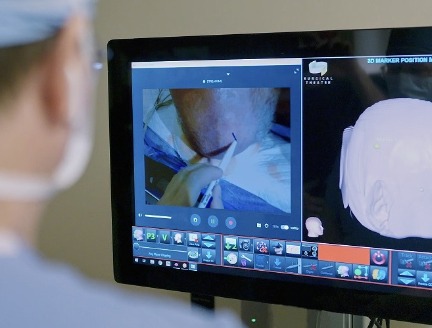


Precision medicine
RNA therapeutics have the potential to transform standard patient care and actualize personalized medicine

Completion of the human genome project in 2003 and advancements in resulting next-generation sequencing technologies have enabled unprecedented progress in the field of therapeutics. From a biomedical perspective, a growing branch of therapeutics includes recombinant proteins, DNA therapeutics and RNA therapeutics. Attention has been cast on RNA therapeutics recently because of the success of the messenger RNA (mRNA) vaccines against COVID-19.
Drug strategies typically entail the usage of small molecule drugs to inhibit or alter protein function by targeting their active sites. However, this strategy is limited since only 1.5% of the human genome encodes proteins and only 10-14% of all proteins have active sites that can be targeted. Hence, the total number of proteins that can be targeted is extremely small. Thus, not every disease-relevant protein can be targeted with this strategy.
Recombinant protein technology is, nevertheless, a vital component of the pharmaceutical industry. The FDA Center for Drug Evaluation and Research approved 48 new agents in 2019 out of which 10 were recombinant proteins, peptides or drug-antibody conjugates. However, there are limitations to this technology since proteins need post-translational modifications, they need to be folded correctly and, moreover, there are concerns about protein size and stability. Therapeutics based on nucleic acids have the potential of bypassing these drawbacks and hence, are superior.

John P. Cooke, MD, PhD
Professor of cardiovascular sciences at Houston Methodist

Francesca Taraballi, PhD
Assistant professor of Orthopedic Surgery at Houston Methodist
Interestingly, nucleic acid-based therapeutics include DNA therapeutics and, more recently, RNA therapeutics – both of which leverage the translational apparatus of the mammalian cell and thereby bypass a lot of the limitations of typical drug strategies. Nucleic acid-based therapeutics entail genetic modifications of human cells to treat genetic disorders such as cystic fibrosis and Huntington’s disease. In a review study published in Frontiers in Bioengineering and Biotechnology, Francesca Taraballi, PhD, assistant professor of Orthopedic Surgery, and John P. Cooke, MD, PhD, professor of cardiovascular sciences at Houston Methodist, detail the advancements in the field of RNA therapeutics.
Inherent differences exist between DNA therapeutics and RNA therapeutics. DNA therapeutics include DNA drugs that encode therapeutic proteins when successfully delivered into the nucleus. This is based on the premise that the therapeutic protein corrects the defect caused by mutations in the gene in question. This category includes DNA plasmids (used in gene therapy, vaccination or cell therapy) and DNA integrated into a viral vector. One of the drawbacks of DNA therapeutics is the possibility of integration of foreign DNA into the host genome which may result in aberrant gene expression.
Successful delivery of DNA drugs into the nucleus depends on the ability of the drug to penetrate both the cytoplasmic membrane and the nuclear membrane. In contrast, RNA therapeutics – which include antisense RNA (RNAi) and mRNA – do not need to enter the nucleus. Therefore, RNA therapeutics pose little risk of integration into the host genome – an attribute that makes RNA therapeutics superior to DNA therapeutics. Once the exogenous RNA is injected into the cytoplasm, it is translated into protein and degrades within minutes to hours. Moreover, RNA drugs are relatively simple to manufacture, cost-effective and have the potential to target pathways that are undruggable via conventional drug strategies.
RNA therapeutics is a rapidly emerging field of biotherapeutics. These therapies are based upon a powerful and versatile platform which has nearly unlimited capacity to address unmet clinical needs. RNA therapeutics are destined to change the standard of care for many diseases. The number of RNA drugs under development and in clinical trials is growing rapidly. In addition, hospital-based RNA therapeutics programs will facilitate RNA-based drug development and accelerate translation of transformative therapies from lab bench to patient’s bedside.”

John P. Cooke, MD, PhD
Professor of cardiovascular sciences at Houston Methodist
Francesca Taraballi, PhD
Assistant professor of Orthopedic Surgery at Houston Methodist
The rapid development of RNA therapeutics involved several disciplines, including RNA biology, bioinformatics, separation science and nanotechnology. Inputs from these various branches of science helped bypass several impediments, including the potential of rapid degradation of the exogenous RNA drug by ubiquitous RNases, safe delivery of the negatively charged RNA across the hydrophobic cytoplasmic membrane and the potential of cell toxicity and erroneous translation. Several RNA therapeutic drugs have received approval from the U.S. Food and Drug Administration (FDA) or the European Union, while many others are undergoing clinical trials.
Antisense RNAs are short oligonucleotides that target complementary sequences in endogenous RNA transcripts to regulate their processing. This category of RNA therapeutics is comprised of antisense oligonucleotides (ASOs), small interfering RNAs and microRNAs. So far, the FDA has approved three ASO drugs, namely nusinersen from Ionis Pharmaceuticals, eteplirsen from Sarepta Therapeutics and inotersen from Ionis Pharmaceuticals and Akcea Therapeutics. These drugs are used to treat spinal muscular atrophy, Duchenne muscular dystrophy and familial amyloid polyneuropathy (FAP), respectively. For instance, a mutation in the transthyretin (TTR) gene leads to FAP owing to the accumulation of aberrant TTR protein in various organs such as kidneys, eyes and nerves. Inotersen, once injected, hybridizes with the endogenous TTR mRNA simulating an RNA/DNA complex and thereby precludes aberrant TTR protein production. Thus, RNA therapeutics can offer major advancements in personalized therapies for myriad patients suffering from genetic disorders.
Another interesting category of RNA therapeutics is aptamers, which are single-stranded nucleic acids capable of binding proteins, peptides, carbohydrates and other molecules with high affinity and specificity due to their tertiary structure. Intriguingly, these can perform as agonists, antagonists, bispecific aptamers or carriers of other drugs. Only one aptamer (pegaptanib) has received FDA approval to date.
Once injected, mRNAs are translated into peptides or proteins in the cytoplasm to replace defective proteins (produced due to gene mutations) or present antigens for vaccination. Additionally, mRNA drugs can be transfected into cells and used as cell therapy.
Another fascinating aspect of RNA therapeutics is that mRNA vaccines can be both prophylactic and therapeutic. Now, there is precedence in science and history about the revolutionary power of mRNA vaccines in alleviating the burden of the COVID-19 pandemic. Of all vaccines under development for COVID-19, the first two to receive FDA approval in December 2020 were RNA vaccines.
As compared to conventional vaccines, RNA vaccines have advantages in safety, efficacy, cost-effectiveness, speed and ease of manufacturing. Ultimately, RNA therapeutics has the potential to target all the genes in a cell. RNA therapy also entails fewer issues stemming from stability, delivery and immunogenicity.
According to Taraballi and Cooke, “RNA therapeutics is a rapidly emerging field of biotherapeutics. These therapies are based upon a powerful and versatile platform which has nearly unlimited capacity to address unmet clinical needs. RNA therapeutics are destined to change the standard of care for many diseases. The number of RNA drugs under development and in clinical trials is growing rapidly. In addition, hospital-based RNA therapeutics programs will facilitate RNA-based drug development and accelerate translation of transformative therapies from lab bench to patient’s bedside.”
RNA therapy holds tremendous potential in altering the future of standard of care. Many novel RNA therapies possibly will emerge that could treat diseases that have no cure to date.
Tulsi Ram Damase , Roman Sukhovershin, Christian Boada, Francesca Taraballi, Roderic I Pettigrew, John P Cooke. The Limitless Future of RNA Therapeutics. Front Bioeng Biotechnol. 2021 Mar 18;9:628137. doi: 10.3389/fbioe.2021.628137. eCollection 2021.
This work was supported by funding from the National Institutes of Health (R01HL133254, R01HL148338, and R01GM125632); Cancer Prevention and Research Institute of Texas (RP150611 and RP200619); George and Angelina Kostas Research Center for Cardiovascular Medicine; as well as the Robert J. Kleberg, Jr. and Helen C. Kleberg Foundation.
Abanti Chattopadhyay, PhD, October 2021








